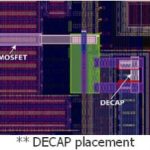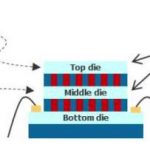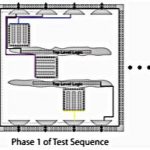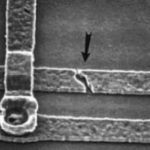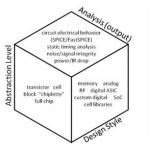In my last corporate EDA job I had customers in Korea that were evaluating a new circuit simulator and getting strange results. When I asked, “Could you send me your test case?” the reply was always, “No, we cannot let any of our IC design data leave the building because of security concerns.”… Read More
Tag: mentor graphics
View from the top: Joe Sawicki
Joe Sawicki is the VP and General Manager at Mentor Graphics for the Design-to-Silicon Division where the Calibre product line is developed. We met today in Wilsonville, Oregon to review the challenges in IC design, processing and manufacturing.… Read More
Improving Analog/Mixed Signal Circuit Reliability at Advanced Nodes
Preventing electrical circuit failure is a growing concern for IC designers today. Certain types of failures such as electrostatic discharge (ESD) events, have well established best practices and design rules that circuit designers should be following. Other issues have emerged more recently, such as how to check circuits… Read More
Learning about 3D IC Design and Test, IEEE Workshop on Friday, December 9th in Newport Beach, CA
The IEEE has an Orange Country Chapter of the Components, Packaging and Manufacturing Technology Society who are organizing an all-day workshop, 3D Integrated Circuits: Technologies Enabling the Revolution. This looks to be an informative day with real-world examples in both design and test being presented by over a dozen … Read More
Managing Test Power for ICs
The goal for automatic test pattern generation (ATPG) is to achieve maximum coverage with the fewest test patterns. This conflicts with the goals of managing power because during test, the IC is often operated beyond its normal functional modes to get the highest quality test results. When switching activity exceeds a device’s… Read More
What’s New with Semiconductor Test and Failure Analysis at Mentor?
ISTFA
Silicon Valley is a great location for trade shows and technical conferences, so if you have an interest in test and failure analysis then don’t miss out on the 37th annual International Symposium for Testing and Failure Analysis. This year ISTFA will be held from Sunday, November 13th thru Thursday, November 17th … Read More
Think differentiation
Wally Rhines’s keynote at the ARM TechCon was about differentiation and how to use it to create measurable value. We all know what differentiation means in some intuitive sense, but how do you make it measurable? Wally’s answer was that differentiation is a measure of the difficulty of switching suppliers and is best… Read More
Parasitic Extraction—My Head Hurts!
By Carey Robertson, Director of Product Marketing, Mentor Graphics
IC physical verification requires a number of different types of checking, the most familiar being design rule checking (DRC), layout vs. schematic (LVS) checking, and parasitic extraction combined with circuit simulation. Fundamentally, it does not matter… Read More
ARM TechCon 2011 Trip Report and Sailing Semiconductors!
This was my first ARM TechCon, they cordially invited me as media, but it certainly was not what I expected. Making matters worse, I had literally just flown in from a very long weekend sailing in Mexico which was much more interesting and certainly made me much less tolerant of sales and marketing nonsense. My Uncle Jim lives on a sailboat… Read More
TSMC 2011 Open Innovation Platform Ecosystem Forum Trip Report
The TSMC OIP conference was Monday and Tuesday of last week. You have probably NOT read about it since it was invitation only and press was not invited. Slides were not made available (except for Mentor), no photos or video were allowed, it was a very private affair. Given that, I won’t be able to go into great detail but I will give you… Read More




